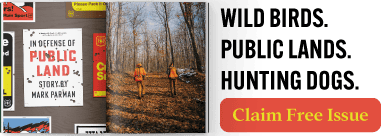Home » Hunting Rules, Licenses, and Seasons » Hunting Washington for Grouse, Quail, Pheasant and More
Hunting Washington for Grouse, Quail, Pheasant and More
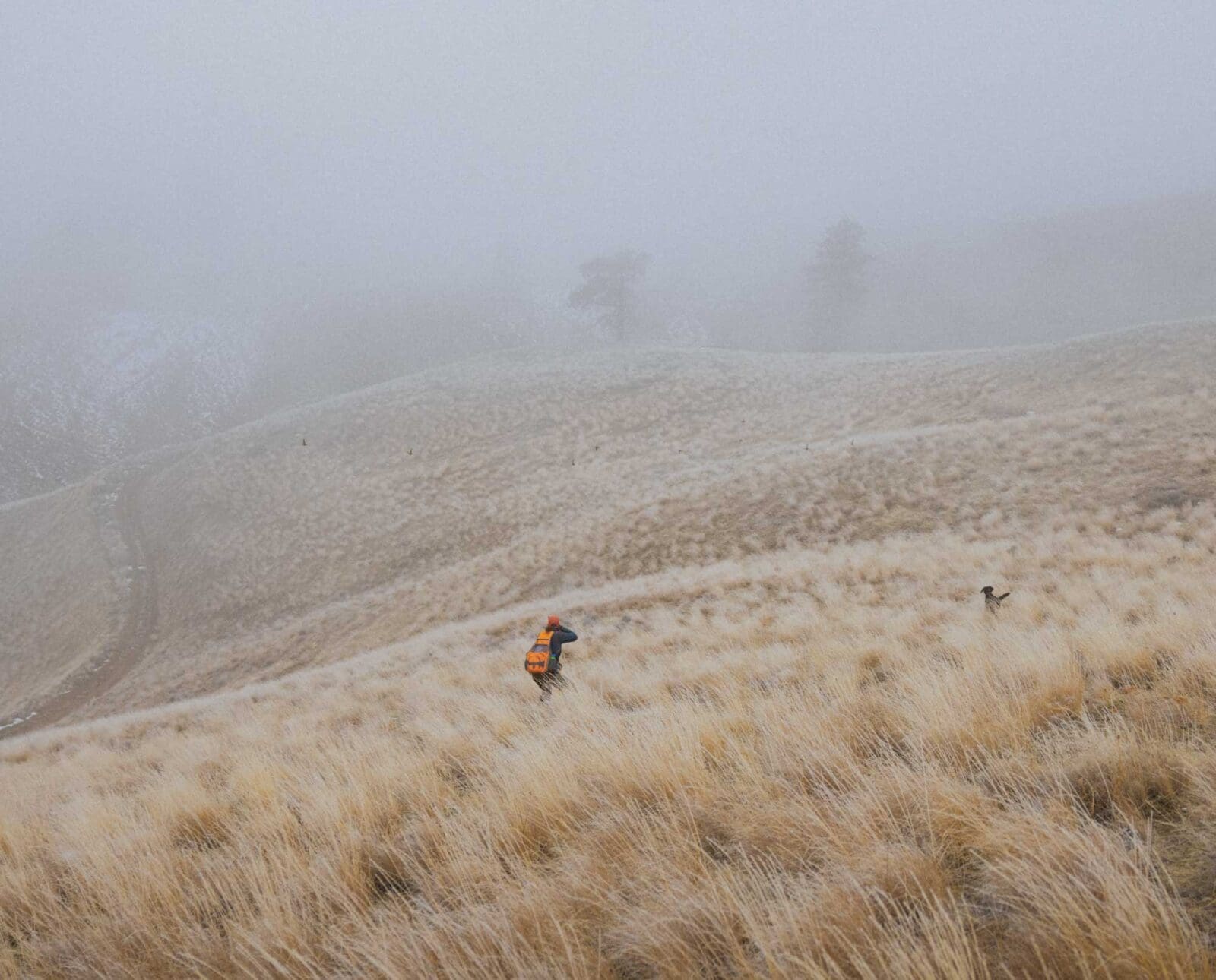
Project Upland is an editorial initiative to capture the cultures…
Northwest knows best — especially when it comes to good quail hunting, forest grouse and other bird hunting opportunities Washington.
The Pacific Northwest has a distinct beauty all its own, and nowhere is this more true than in Washington state. The major feature that really makes this state what it is are the mountains. The mountains have plenty to offer by themselves—not the least of which are populations of grouse. But it’s also what the mountains do to the state, dividing it distinctly into western and eastern portions. This has an effect on the land itself, of course, but it also means the hunting seasons are divided by regions.
There are rainforests to the west of the mountains and desert regions to the east. And while there are 150 different wildlife areas and 139 state parks found throughout Washington, about 50 percent of the entire state is privately owned. In order to make that land accessible to hunters, Washington has a number of land access programs. “Feel Free to Hunt,” for example, allows hunters to enter private land without needing permission from the land owners. Other programs, like “Register to Hunt” and “Hunt By Reservation” explain themselves.
| Species | Dates | Daily/Possession Limit | Notes |
| Pheasant (Western Washington) | Sept. 23 – Nov. 30, 2023 | 2/15 (either sex) | 8am-4pm only |
| Pheasant Extended (Western Washington) | Dec 1 -15, 2023 | 2/15 (either sex) | ONLY at Belfair, JBLM, Kosmos, Lincoln Creek, Scatter Creek, Skookumchuck, Green Diamond resource lands & Whidbey Island release sites |
| Pheasant Youth (Western Washington) | Sept 16-17, 2023 | 2/4 (either sex) | 8am-4pm only |
| Pheasant Hunters 65 Years or Older, Hunters with Disabilities (Western Washington) | Spet. 18 – 22, 2023 | 2/10 (either sex) | 8am-4pm only |
| Pheasant (Eastern Washington) | Oct. 21, 2023 – Jan. 15, 2024 | 3/15 (roosters only) | |
| Pheasant Youth (Eastern Washington) | Sept. 16-17, 2023 | 3/6 (roosters only) | |
| Pheasant Hunters 65 Years or Older, Hunters with Disabilities (Eastern Washington) | Sept. 18 – 22, 2023 | 3/15 (roosters only) | |
| Sooty & Dusky (Blue) Grouse | Sept. 15, 2023 – Jan. 15, 2024 | 4/12 combined with other forest grouse to exceed 3/9 of any species | *forest grouse |
| Ruffed Grouse | Sept. 15, 2023 – Jan. 15, 2024 | 4/12 combined with other forest grouse to exceed 3/9 of any species | *forest grouse |
| Spruce Grouse | Sept. 15, 2023 – Jan. 15, 2024 | 4/12 combined with other forest grouse to exceed 3/9 of any species | *forest grouse |
| Sharp-tailed Grouse | CLOSED | NONE | |
| Sage Grouse | CLOSED | NONE | |
| Ptarmigan | CLOSED | NONE | |
| California (Valley) Quail (Western Washington) | Sept. 23 – Nov. 30, 2023 | 10/30 combined with bobwhite | |
| California (Valley) Quail (Eastern Washington) | Oct. 7, 2023 – Jan 15, 2024 | 10/30 combined with bobwhite | |
| California (Valley) Quail Youth (Eastern Washington) | Sept. 16-17, 2023 | 10/20 combined with bobwhite | |
| Bobwhite Quail (Western Washington) | Sept. 23 – Nov. 30, 2023 | 10/30 combined with bobwhite | |
| Bobwhite Quail (Eastern Washington) | Oct. 7, 2023 – Jan 15, 2024 | 10/30 combined with bobwhite | |
| Bobwhite Quail Youth (Eastern Washington) | Sept. 16-17, 2023 | 10/20 combined with bobwhite | |
| Mountain Quail | Sept 23 – Nov 30, 2023 | 2/4 | 8am to 4pm – Closed in Eastern Washington |
| Chukar | Oct 7, 2023 – Jan 31, 2024 | 6/18 | Eastern Washington Only |
| Chukar Youth | Sept. 16-17, 2023 | 6/12 | Eastern Washington Only |
| Gray (Hungarian) Patridge | Oct 7, 2023 – Jan 15, 2024 | 6/18 | Eastern Washington Only |
| Gray (Hungarian) Patridge Youth | Sept. 16-17, 2023 | 6/12 | Eastern Washington Only |
| Mourning Dove | Sept. 1 – Oct. 30, 2023 | 15/45 | Statewide |
| Band-tailed Pigeon | Sept. 16 – 24, 2023 | 2/6 | Statewide |
| Snipe | Oct. 12-22 & Oct. 25, 2023 – Jan 28, 2024 | 8/24 | Statewide |
| Crow | Sept. 1 – Dec 31, 2023 | No Limit | Statewide |
* All game hunting seasons, limits, and laws are subject to change. For the latest information from the state check out the WDFW site. The last update of this information was on August 8, 2023.
Forest Grouse in Washington
Washington is home to ruffed grouse, spruce grouse, and both species of blue grouse.
None of the forest grouse are heavily targeted in Washington, but enthusiasts will find healthy populations of forest grouse in all of the lowland and mountain forests. The western side of the state can be particularly challenging with dense undergrowth that remains thick and green all season long. Look for alder stands and flowing water and keep your ears open to hear the flush of a grouse in the dense cover. On the eastern side of the state, look for aspen stands.
Above 4,000 feet, hunters can find blue grouse in the forests. West of the Cascade crest, these are likely to be sooty grouse. East of the Cascade crest, these are likely to be dusky grouse. Whatever the variety, blue grouse are relatively easy to find along roads and cuts in the forested areas. Pay particular attention to edges and borders of clear cuts. Blue grouse often like to sit on a slope where they have a clear, downward path to fly in order to take cover in a tree roost.
Spruce grouse can be found higher and deeper in the mountains than blue grouse, though they are less abundant. Find them in the high forests of the Cascade and Olympic Mountains.
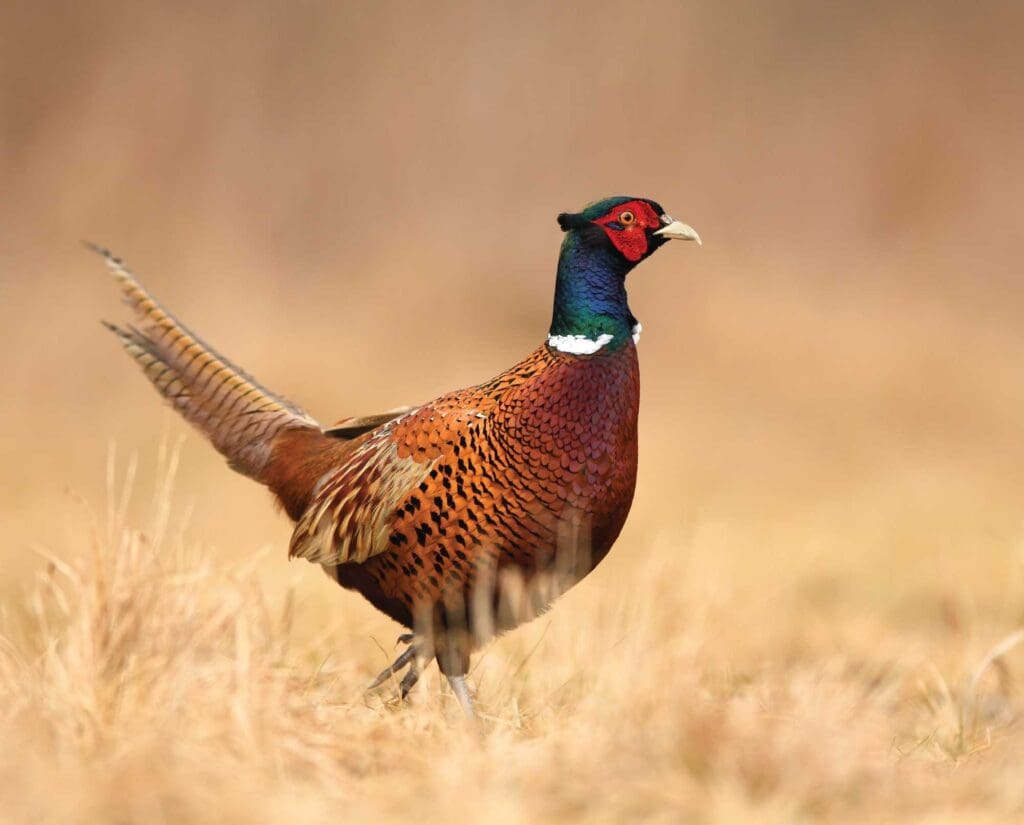
Ring-Necked Pheasant in Washington
Pheasant hunting in Washington is divided by the Cascade mountains. Eastern and western Washington have unique seasons and rules for pheasant hunting.
Eastern Washington holds wild populations of pheasants, which is supplemented with an annual release program. The Washington Department of Fish and Wildlife provides good information about the locations of release sites, if you are looking to increase your chances of encountering birds. Wild pheasants can be found in agricultural areas all over eastern Washington. Only roosters may be taken.
Western Washington generally does not support wild populations of pheasants, so pheasant hunting is limited to release sites only.
Quail Hunting in Washington
There are three kinds of quail available for bird hunting in Washington, but by far the most common is the California or valley quail. California quail can be hunted on either side of the state, but eastern Washington holds significantly higher numbers. Look for California quail in Russian Olive thickets near water, especially near irrigation sloughs in agricultural areas.
Mountain quail can be found in western Washington, though not in large numbers. Any mountain quail found in eastern Washington are protected and cannot be hunted.
There is a season for bobwhite quail in Washington, but there is an extremely limited population of previously released birds that survived to the present day.
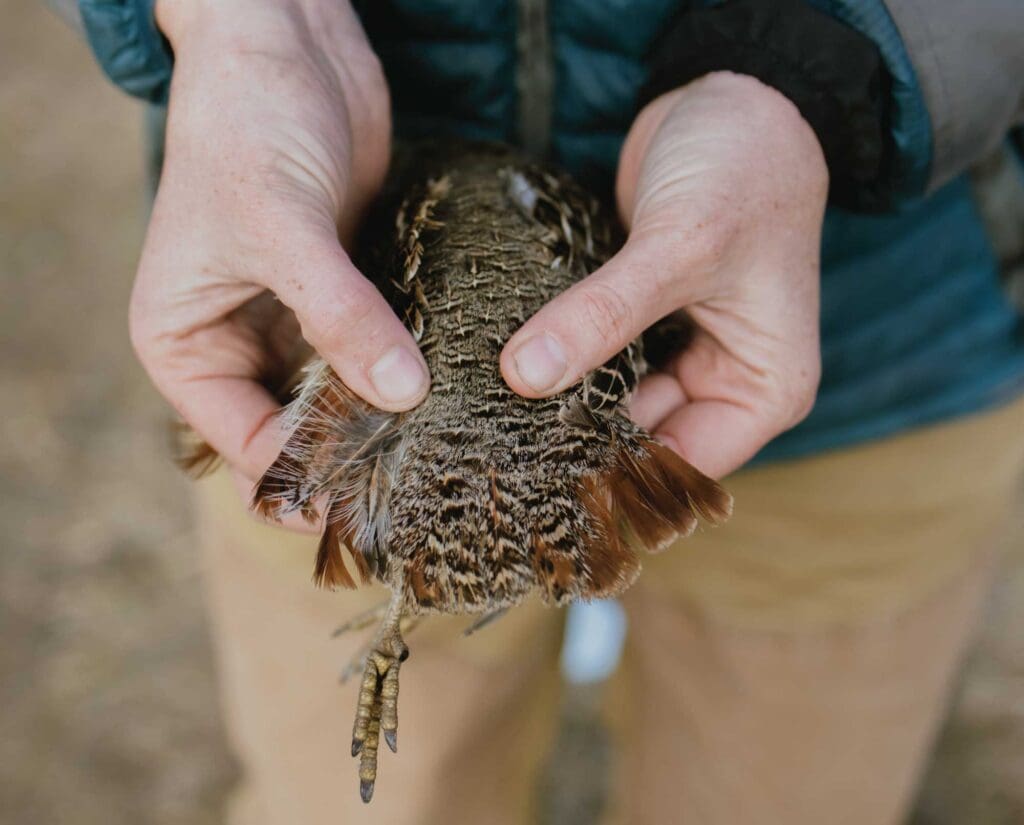
Chukar and Grey (Hungarian) Partridge Hunting in Washington
Chukar hunting can be found in the rocky canyons and breaks along the Columbia River in central Washington and along the Snake River in eastern Washington. Hungarian partridge hunting can be found in similar areas, though they are typically found in the flatter, agricultural areas of these same locations. Look for wheat fields if you are targeting Huns. Be prepared to walk and climb if you are pursuing either of these birds.
Migratory Bird Hunting Opportunities in Washington
While Washington state offers numerous waterfowl hunting opportunities, there are also other migratory birds that captivate upland game hunters’ interest. A reboost snipe hunting season is available in Washington, alongside morning dove hunting opportunities. Adding to the list, a more obscure and limited season is dedicated to the Band-tailed pigeon, granting a mere 9 days of opportunity to pursue this sizable migratory bird. Furthermore, for those who pursue crow as potential quarry, a lengthy 4-month season remains open.
Related Conservation and Non-Profit Organizations for Bird Hunting in Washington
North American Versatile Hunting Dog Association
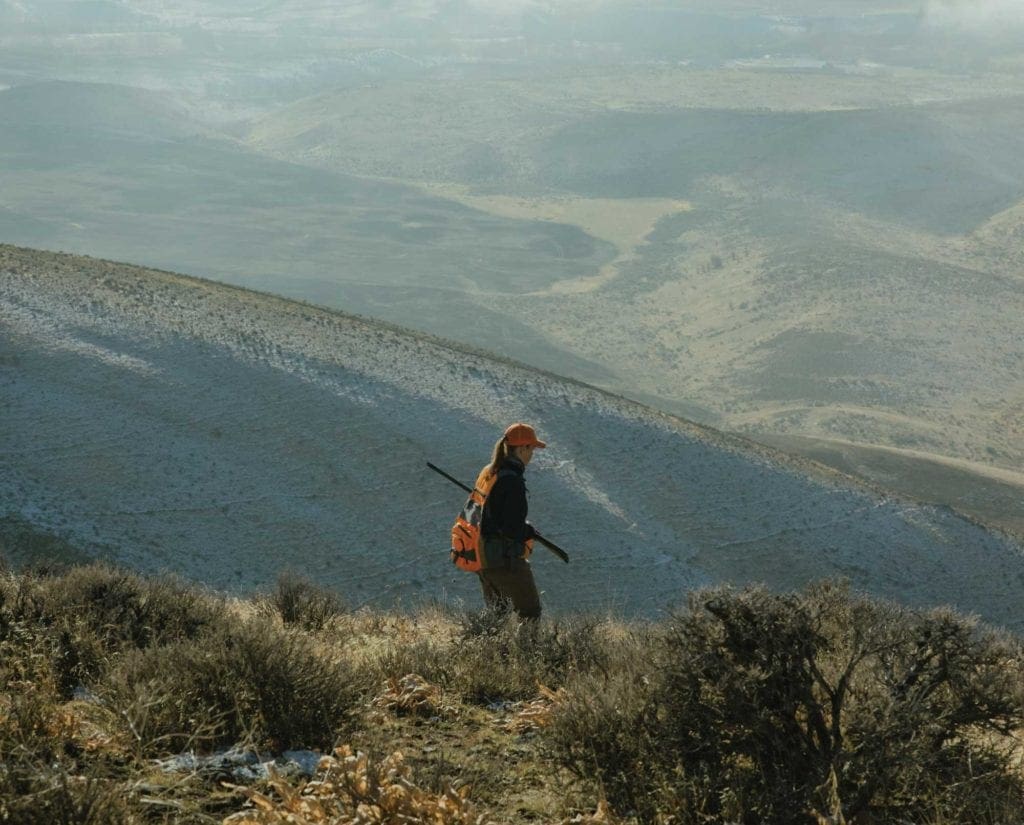
The Hunter Safety Course and Dog Training for Bird Hunting in Washington
Anyone born after January 1, 1972, who wants to buy a license for bird hunting in Washington will need to acquire a hunter education certificate. Washington does offer a one-time deferral program for one year. Anyone 10 years old or older taking advantage of the deferral program will need to be accompanied by a licensed adult. In addition to holding a valid license for that year, the mentor will also need to have had a valid license for the past three. Check out the hunter course.
You may train your dog for bird hunting in Washington between August 1 and March 31 and year-round on some designated wildlife areas. Any game birds released during dog training must be banded or marked and you must have the receipt identifying the game farm where they were purchased. No wild birds may be shot out of season.
Hunting License Fees in Washington
| License* | Resident | Non-resident |
| Small game – annual | $40.50 | $183.50 |
| Non-resident 3-day small game | — | $68.00 |
| Western WA pheasant – annual (does not require small game license) | $84.50 | $167.00 |
| Western WA pheasant – 3-day (does not require small game license) | $40.50 | $79.00 |
* License fees, laws, and availability are subject to change. For the latest information please go to the WDFW Hunting site. The last update of this information was on August 8, 2023.
Project Upland is an editorial initiative to capture the cultures and traditions of upland bird hunting. We seek to inspire a future generation of upland bird hunters to understand the essence of hunting traditions and the critical cause for conservation.

